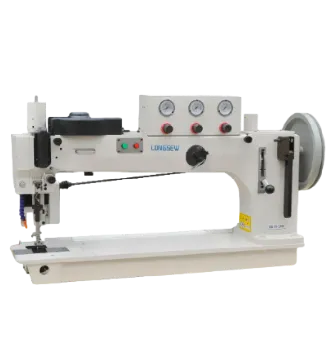Durable Safety Rope Sewing Techniques for Enhanced Security and Reliability
The Importance of Safety in Rope Sewing
In various industries, the importance of safety cannot be overstated, and this is especially true when it comes to the utilization of ropes for various applications. Whether in construction, climbing, rescue operations, or recreational activities like camping and sailing, ropes play a critical role in ensuring safety and efficiency. One of the key factors that directly influence the reliability of ropes is the sewing process used to create and secure them. This article delves into the significance of safety in rope sewing, outlining essential practices, quality control measures, and the overall impact on user safety.
The Importance of Safety in Rope Sewing
To ensure safety in rope sewing, it is imperative to follow best practices from the onset. First, selecting the right type of thread is crucial. High-tenacity polyester or nylon threads are commonly recommended because of their resistance to UV degradation, abrasion, and moisture. Additionally, the sewing technique employed makes a significant difference. For instance, using a lock stitch method can provide a more secure hold than a simple running stitch, as it prevents unraveling in case of a break.
safety rope sew

Quality control is another critical aspect of safety in rope sewing. Manufacturers should implement rigorous testing protocols to evaluate the strength and durability of sewn ropes. This often involves subjecting the ropes to various stress tests that simulate real-world conditions. By understanding the load-bearing capacity and failure points, manufacturers can make informed decisions about design improvements and material selections. Furthermore, regular inspections and maintenance of sewn components ensure that any wear and tear are addressed before they become problematic.
In addition to manufacturing standards, user education plays an equally important role in ensuring safety. Users must be trained in proper handling techniques and aware of the limitations of the ropes they are utilizing. For example, understanding the weight limits and proper use of sewn loops can significantly reduce the risk of accidents. Moreover, users should be aware that environmental factors such as moisture, extreme temperatures, and exposure to chemicals can affect the integrity of the rope and sewn components.
Lastly, it is essential to foster a culture of safety within industries that rely heavily on rope use. This involves promoting open communication about safety practices, encouraging reporting of any incidents or near misses, and continuously updating training programs in line with technological advancements. By prioritizing safety in rope sewing and broader rope management practices, organizations can create a safer working environment for all employees.
In conclusion, the importance of safety in rope sewing cannot be overstated. Through careful selection of materials, adherence to quality control standards, user education, and a strong safety culture, the risks associated with rope use can be significantly mitigated. As we continue to rely on ropes in various applications, ensuring their safety and reliability must remain a top priority. After all, the stakes are high, and the well-being of individuals often depends on the strength of the bonds we sew.
-
Industrial Cylinder Arm Sewing Machine: Revolutionizing Heavy-Duty SewingNewsJul.28,2025
-
Cylinder Arm Sewing Machine: Perfect for Special Sewing ApplicationsNewsJul.28,2025
-
Cylinder Bed Sewing Machine: Essential for Sewing Complex MaterialsNewsJul.28,2025
-
Heavy Duty Sewing Machine: The Essential Tool for Industrial ApplicationsNewsJul.28,2025
-
Computerized Pattern Sewing Machine: Revolutionizing Precision StitchingNewsJul.28,2025
-
Heavy Duty Industrial Sewing Machine: Power Meets PrecisionNewsJul.28,2025
-
Leather Sewing Machine: The Industrial Standard for Tough MaterialsNewsJul.18,2025





























